A while ago I bought three old chisels at a jumble sale. I found them thrown in a box together with some junky tooling. I didn’t have time to properly check them out to see what I was buying, and at home I put them somewhere in a corner and forgot all about them.
Somehow the chisels resurfaced and grabbed my attention. Upon closer inspection the condition wasn’t all that bad. Not good enough to really use, but at least something to nicely restore. All three chisels had a marking/logo imprinted on the shaft. After a bit of googling, I found out that one chisel is a “Nooitgedagt”. It’s a well known Dutch woodworking tool manufacturer which regrettably does not longer exist. These chisels are known to be of high quality. I estimate that this chisel was produced somewhere in the 50’s. It had some rust on the blade, but the handle was in remarkable condition.
The second chisel had a logo with a fish in it. The brand is even more well know and regarded: “Erik Anton Berg”. These are highly sought after, and this one is probably worth about 70 euros. As with the first chisel, it had a bit of rust and still a good handle.
I found a video on Youtube explaining that clearing the rust is very easy if you soak it a while in vinegar. So, overnight I let it soak in a tube filled with said vinegar. The next morning, I could literally just wipe off the dirt and rust. I polished it a bit with a wire-brush on a cordless drill and the result was stunning. After sharpening, the blades looked as good as new. What really stood out that it is clearly visible two different kinds of steel are used.
The third chisel was a bit of a different story. First of all, I’m unable to find which brand it is. It does have mark, but I have no clue where it’s from. The blade was reasonably ok, but the handle was shattered. I took the measurements and went to the Bodgers where I do some woodworking and turning. It was quickly decided to use ash to turn a new handle. The copper rings on the top and bottom are reused from an old curtain-stopper. The function of the top one is preventing the wood from splitting when you give it a ‘little tap’. The bottom one is to compress the wood against the steel so the blade doesn’t fall off. By the way, all these parts probably have dedicated names, but hey, I’m no expert in chiselmology. The blade had the same treatment as the other chisels. Mounting the two parts together returned the chisel to former glory. From what I can tell, this blade is of high quality, as it has an imprint from a Brinel hardness test. Clearly visible again are the two different steel layers.
Next jumble sale, I’ll be going through every old toolbox I can find!
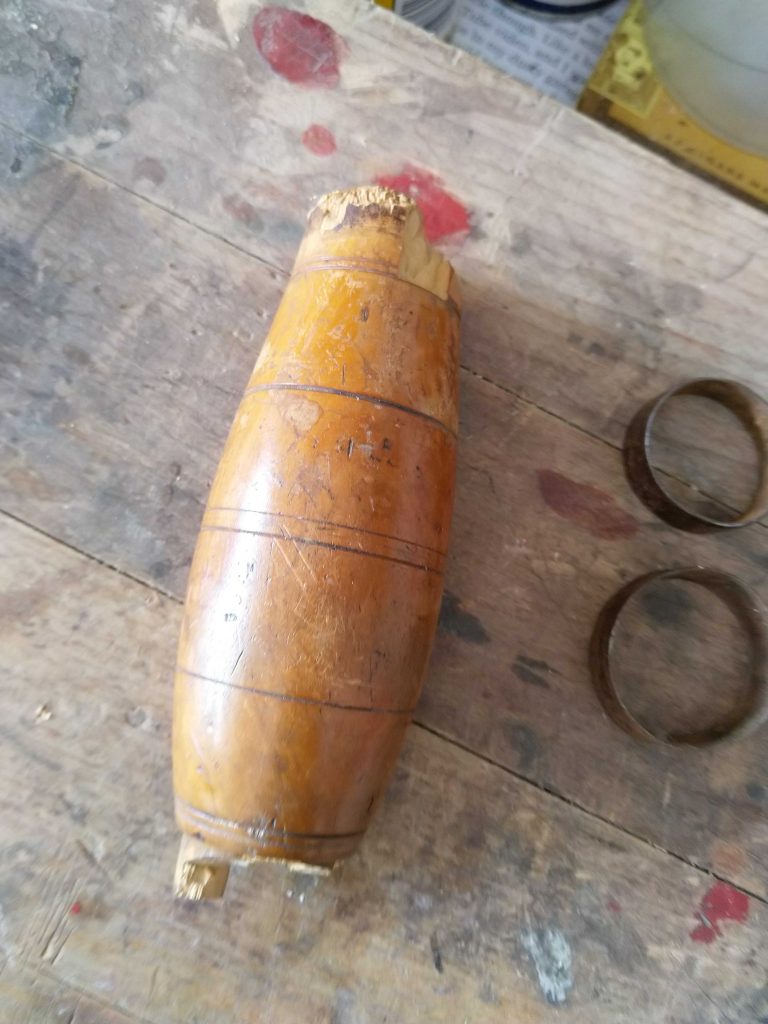
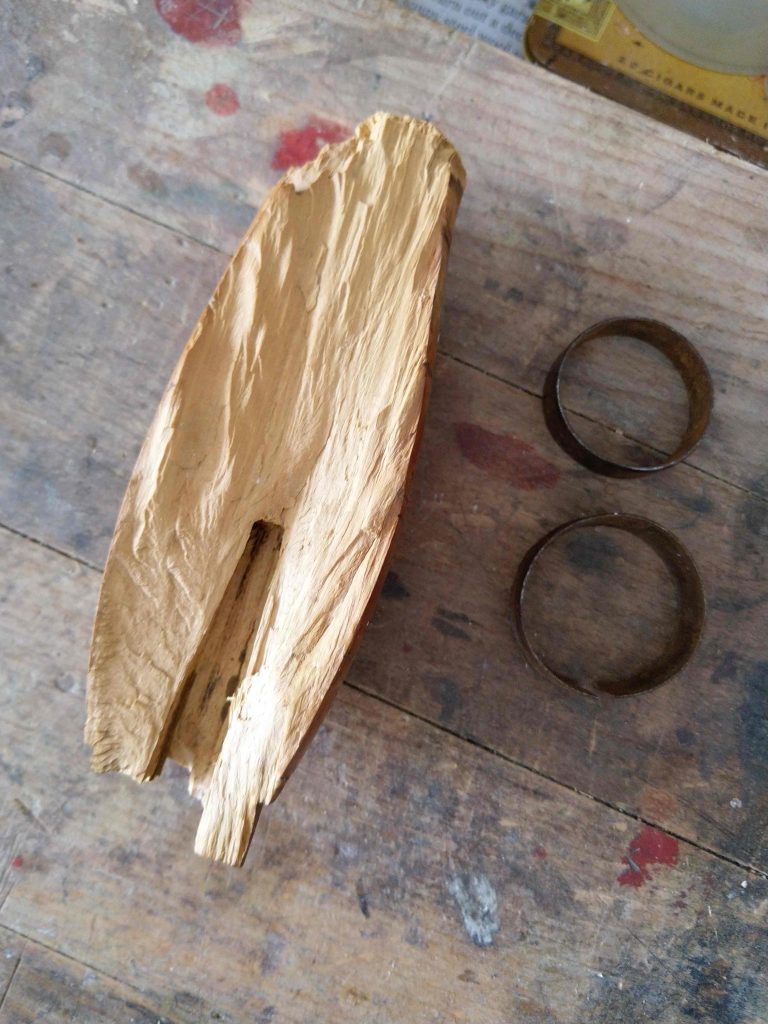
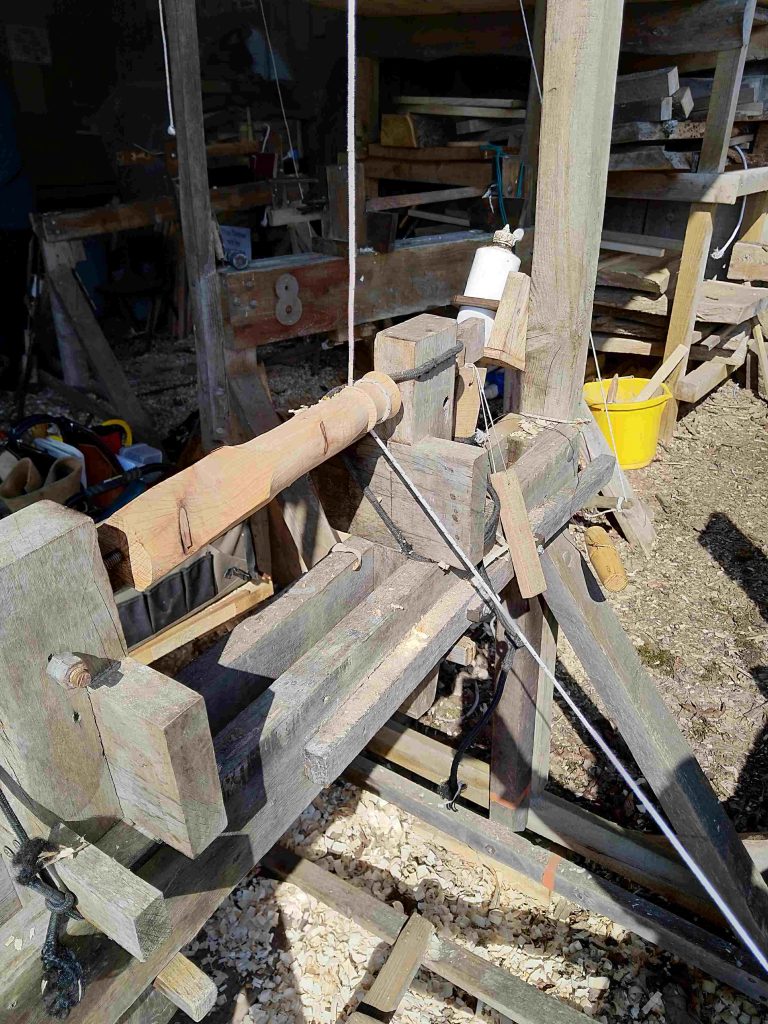
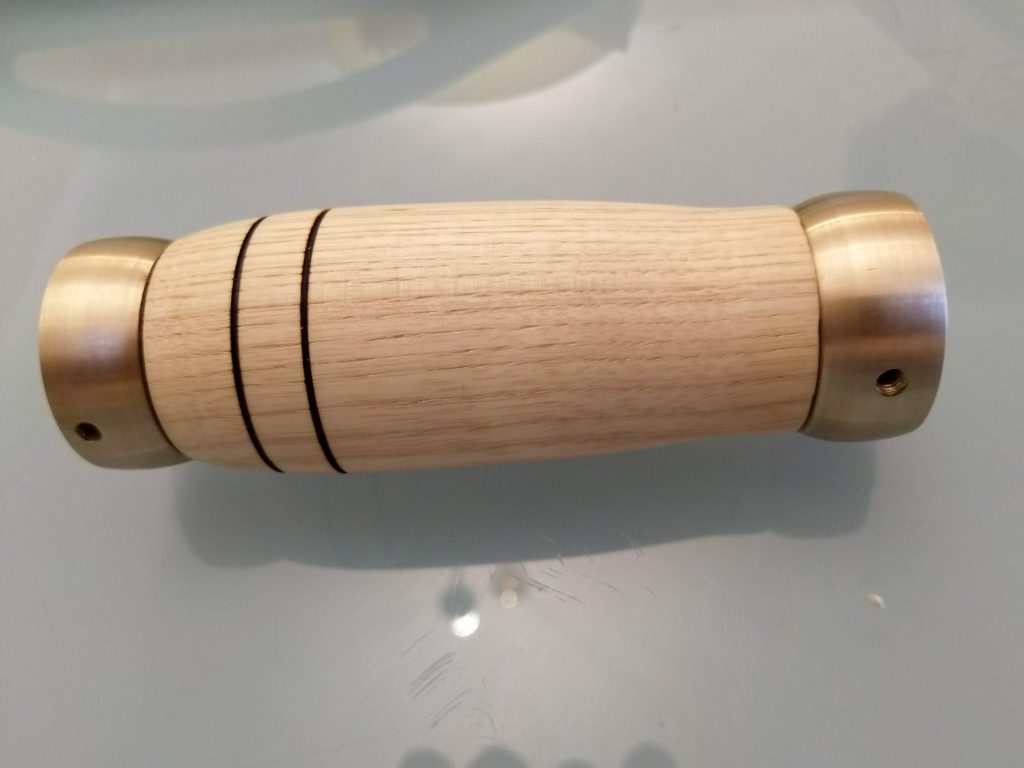
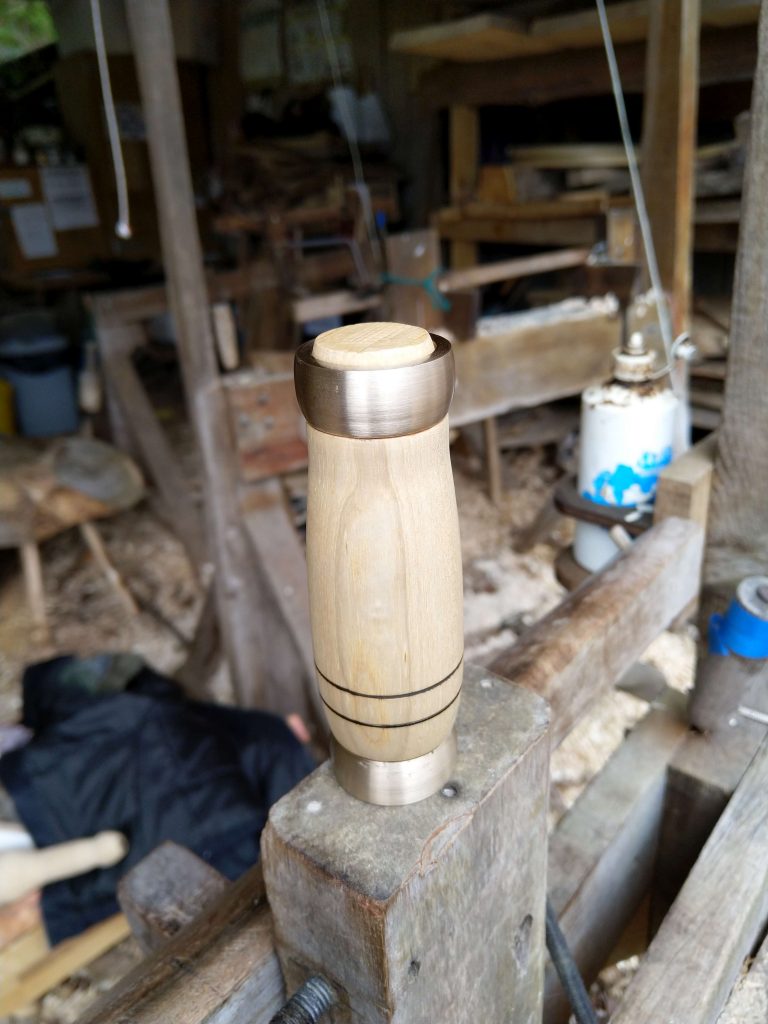
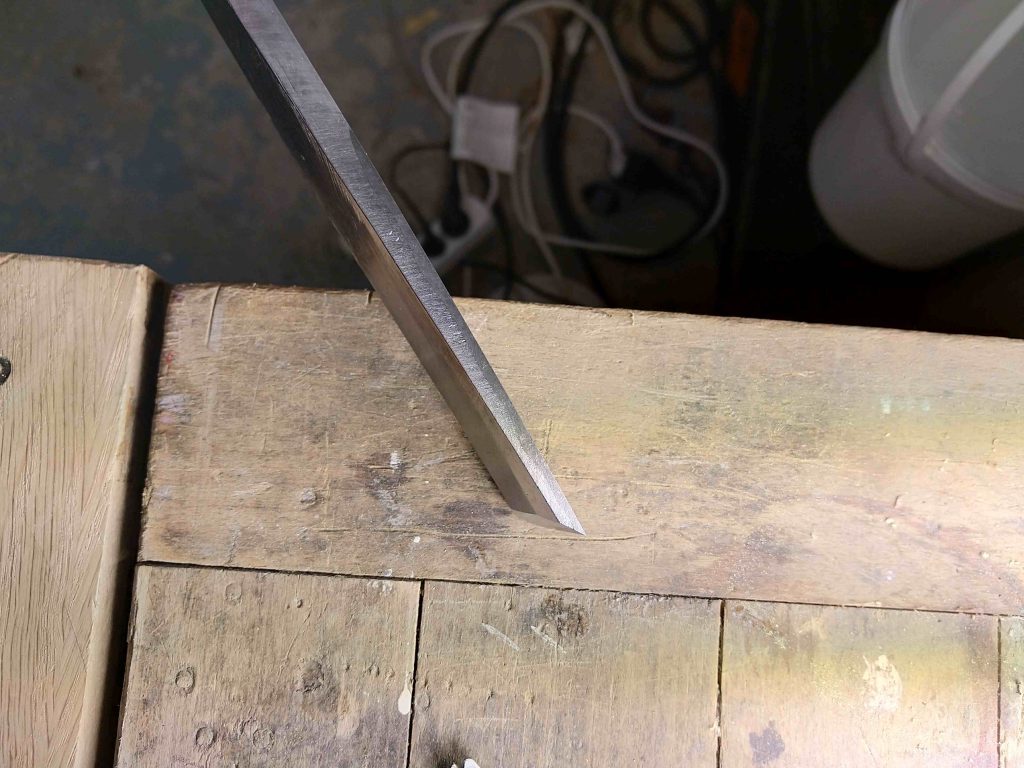
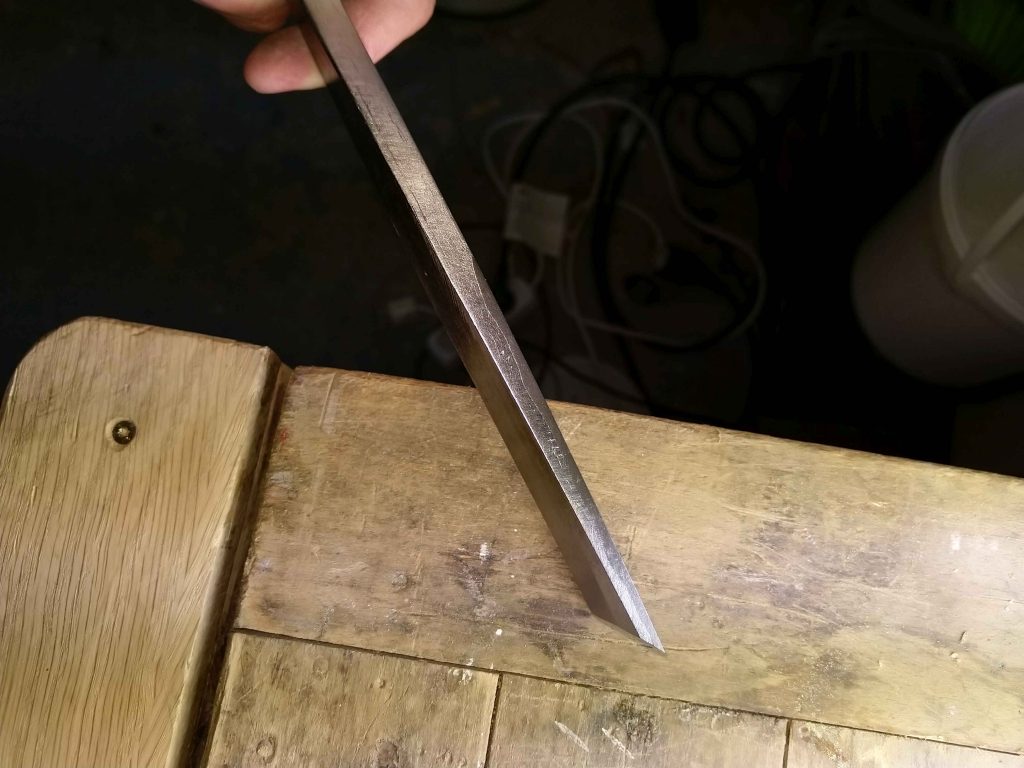
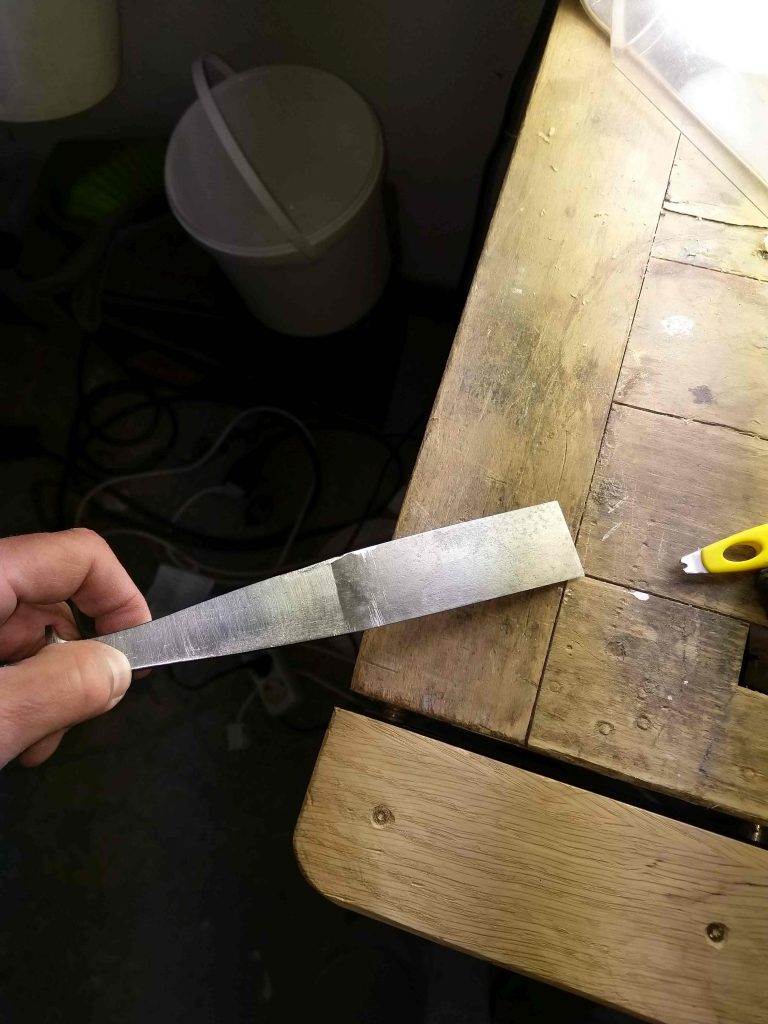
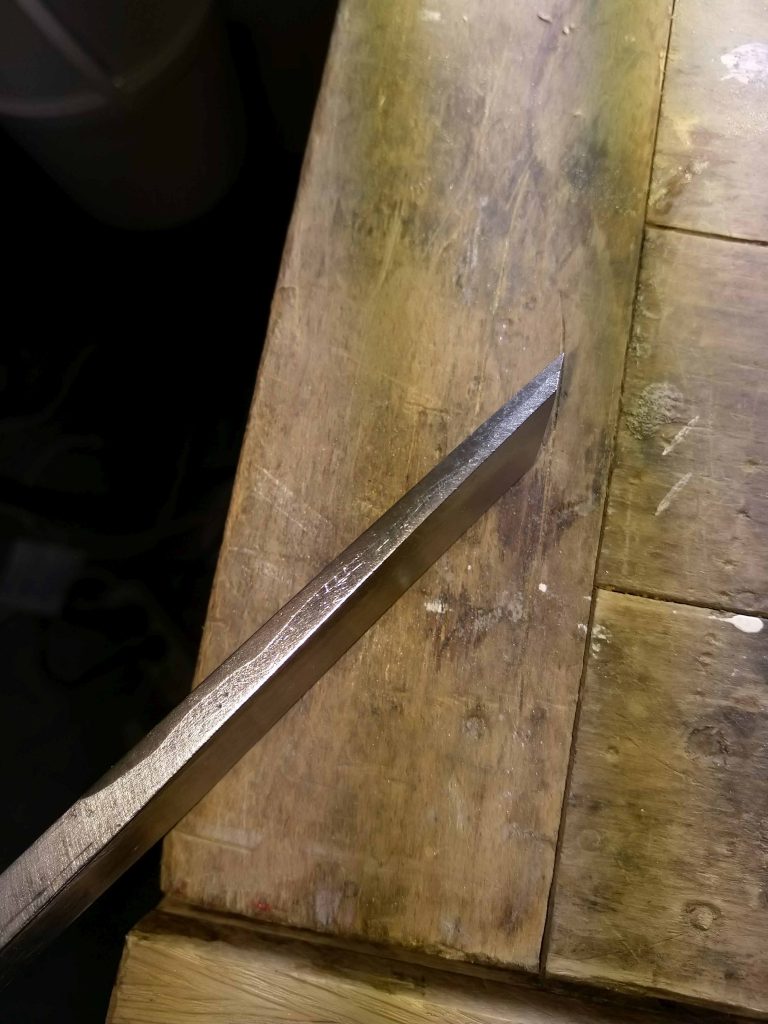
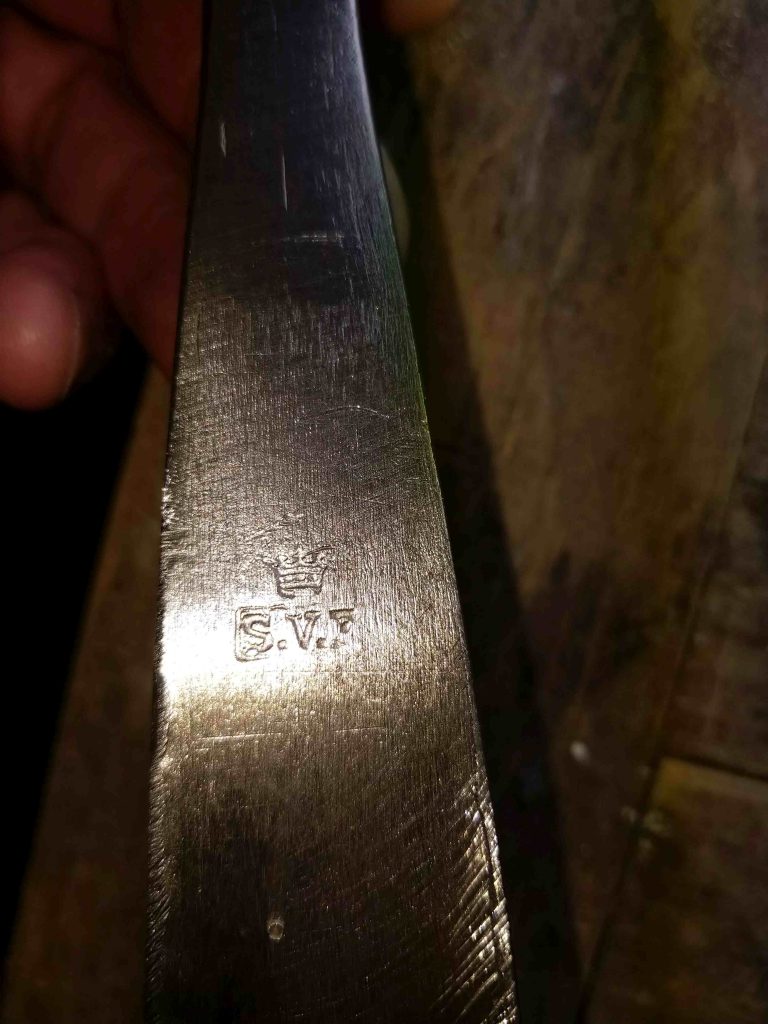
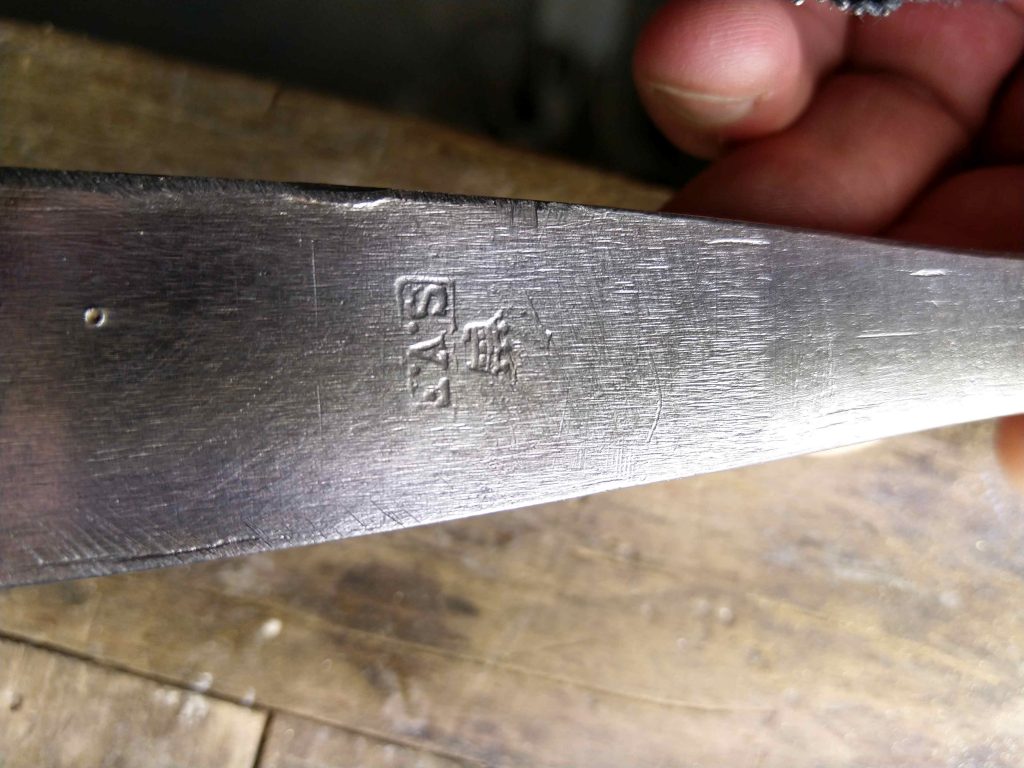
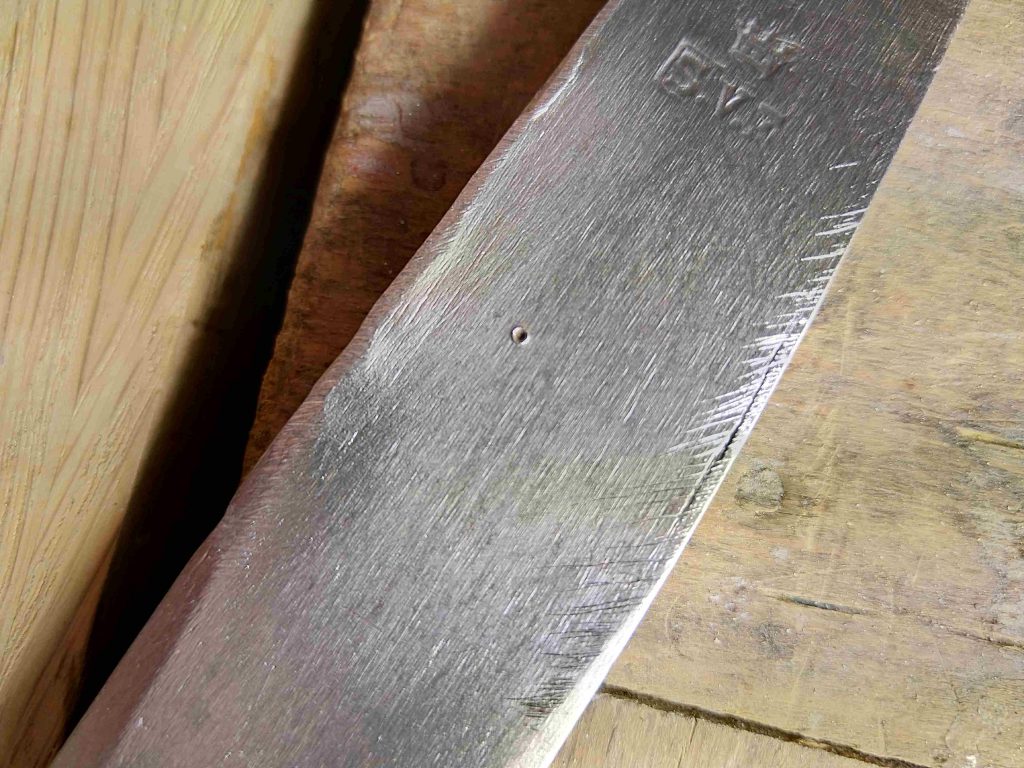
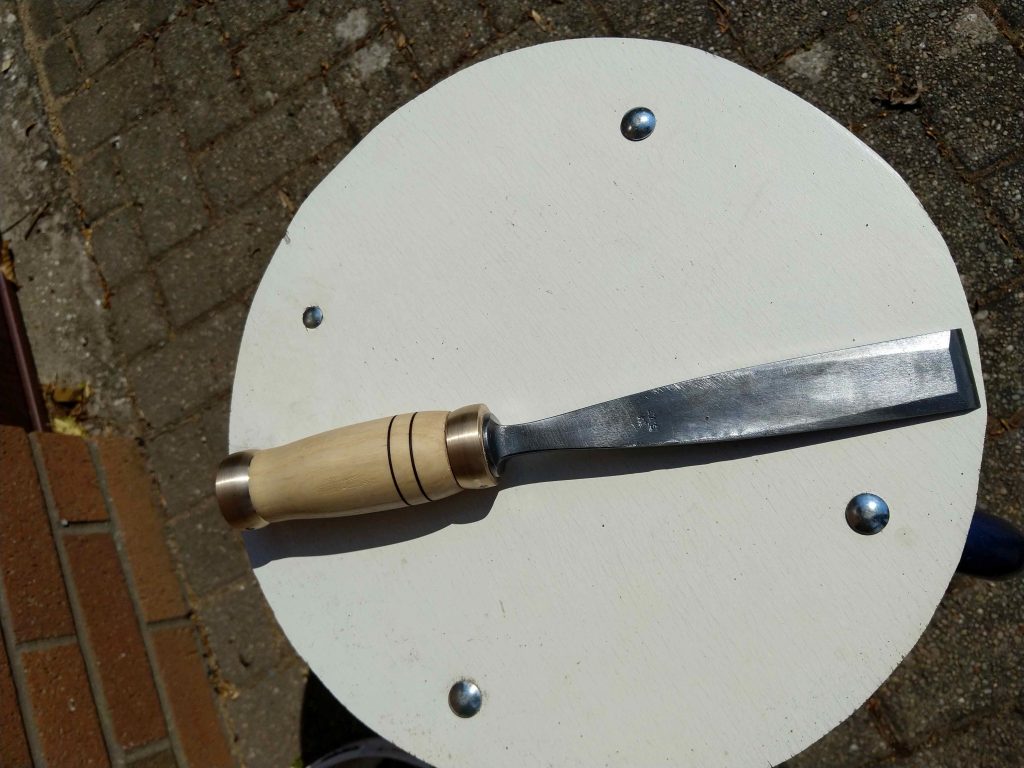
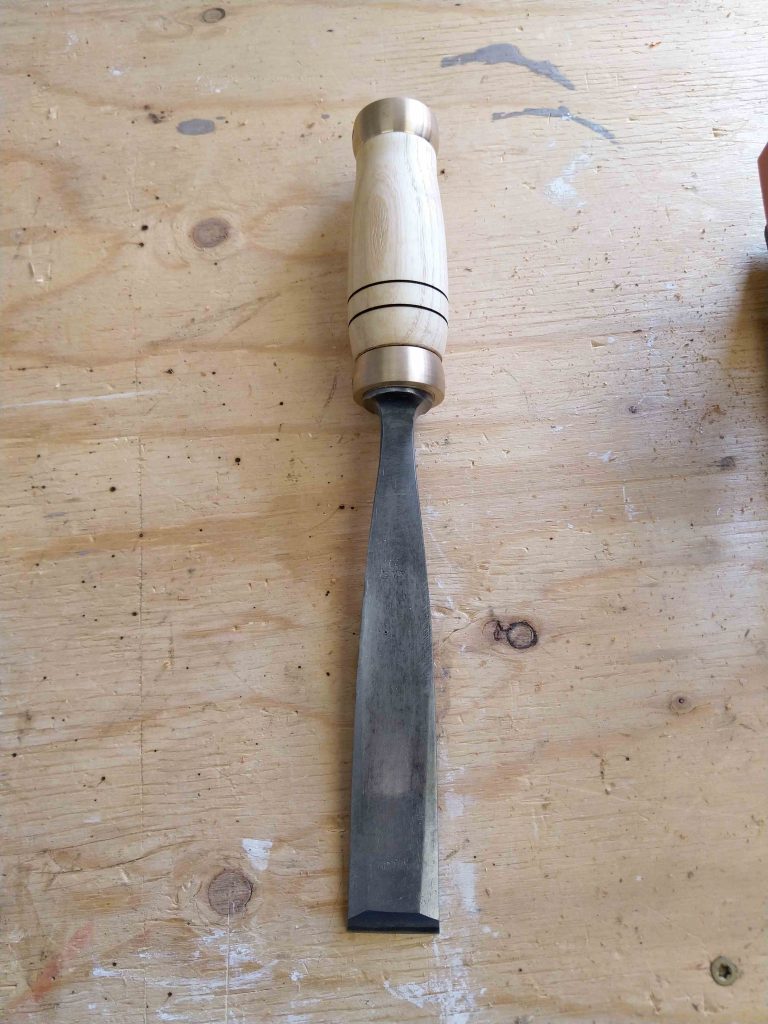
Nice